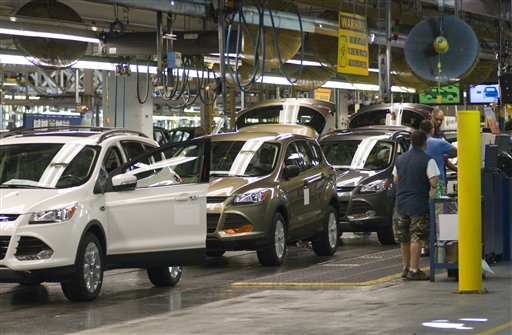

The carmaker, which produced 1 million vehicles at the former Daewoo plant, reaffirmed its promise to invest $300 million in Romania to develop a new light commercial vehicle starting in 2023, with a completely electric version following a year later. In Romania, the automaker employs around 6,000 people and produces the Puma and EcoSport models, as well as the EcoBoost 1.0 liter engine. However, from 2018, the automaker has produced a minimum of 140 thousand vehicles per year, with a peak of approximately 180 thousand automobiles in 2020. From 2009 to 2017, Ford Romania’s automobile production fluctuated. In March 2008, Ford entered Romania and the purchase of a 72.4 percent ownership in Automobile Craiova, the only owner of Daewoo Automobile Romania, a car manufacturer and distributor. It was the first time a car made in Romania came close to matching the American automaker’s two best-selling models in Europe. Renault Group will launch Dacia Spring, the Romanian brand’s first fully electric car, in October 2020, while Ford Puma, the Craiova-built SUV, sold 42,000 units in Q3, placing third behind the Fiesta and Focus models. In addition, its brand value in 2021 was 1.1 billion euros. Since 2017, the company has generated annual revenues of more than five billion euros. They operate in a unique fashion, covering the entire chain (design-engineering-testing-tooling-manufacturing-logistics-aftersales-sales-financing) through their four operation centers across the country.Īutomobile Dacia was the most profitable firm in Romania for several years.

Renault Dacia is one of South-Eastern Europe’s most technologically advanced corporations. Furthermore, Dacia produces sub-assemblies that are used in facilities in Morocco, Russia, Iran, India, Brazil, Colombia, and South Africa. Approximately 91 percent of Dacia vehicles are shipped to 60 countries across four continents. There are now 13,823 employees working for the company. The French Renault Group spent EUR 1.5 billion in Dacia, which produces 350,000 automobiles per year, twelve years ago. The strong local product range from Dacia and Ford, which includes new and enhanced models, is also a significant present and future possibility, as consumer preferences are evolving toward cars that provide good value for money, which both brands provide in Romania. Renault and Ford, driving the Romanian Car production. On the demand side, the sales of new cars on the Romanian market also reached the highest level in more than ten years.

More than 600 OEMs for automotive supplies opened plants in Romania, directed at the local producers as well as to export. Pitesti, Craiova, and Brasov are among the cities where the industry is concentrated. In 2020, the total number of cars produced was 438.107. Automobiles, minivans, utility vehicles, buses, and trucks are all manufactured in Romania. The industry, which is home to two OEMs (Original Equipment Manufacturers – Renault Dacia and Ford) and benefits from international investments from firms like Daimler and Bosch, is one of Romania’s most important economic engines. The Romanian automobile industry, which has more than 80 years of expertise, was valued at 30 billion EUR in 2019 and has been on the rise for years, contributing 14 percent to GDP and 26 percent to exports. Romania has a greater potential for growth in the car manufacturing industry than other Central and Eastern European countries. These joint ventures manufacture for both the domestic and international markets (for example, Renault-Dacia). The majority of Romanian suppliers collaborate with foreign partners in joint ventures, with the Romanian side supplying production facilities, utilities, and engineering services, and the international vehicle manufacturers bringing their brand, worldwide know-how, and services. Romania has a small but expanding automotive cluster with a supplier and component manufacturer network.

Branch plants primarily employ blue collar workers, with research and executive posts confined to other countries. Although there are several notable domestic manufacturers, such as Automobile Dacia, Roman Brasov, and Igero, much of Romania’s manufacturing industry is made up of foreign branch units. In recent years, the automotive industry has been one of the most profitable sectors of the Romanian economy. Article proposed by Dacian Traianescu, young graduated from the University of Bucharest, in the Blue Europe 2021 Fall Contest.


 0 kommentar(er)
0 kommentar(er)
